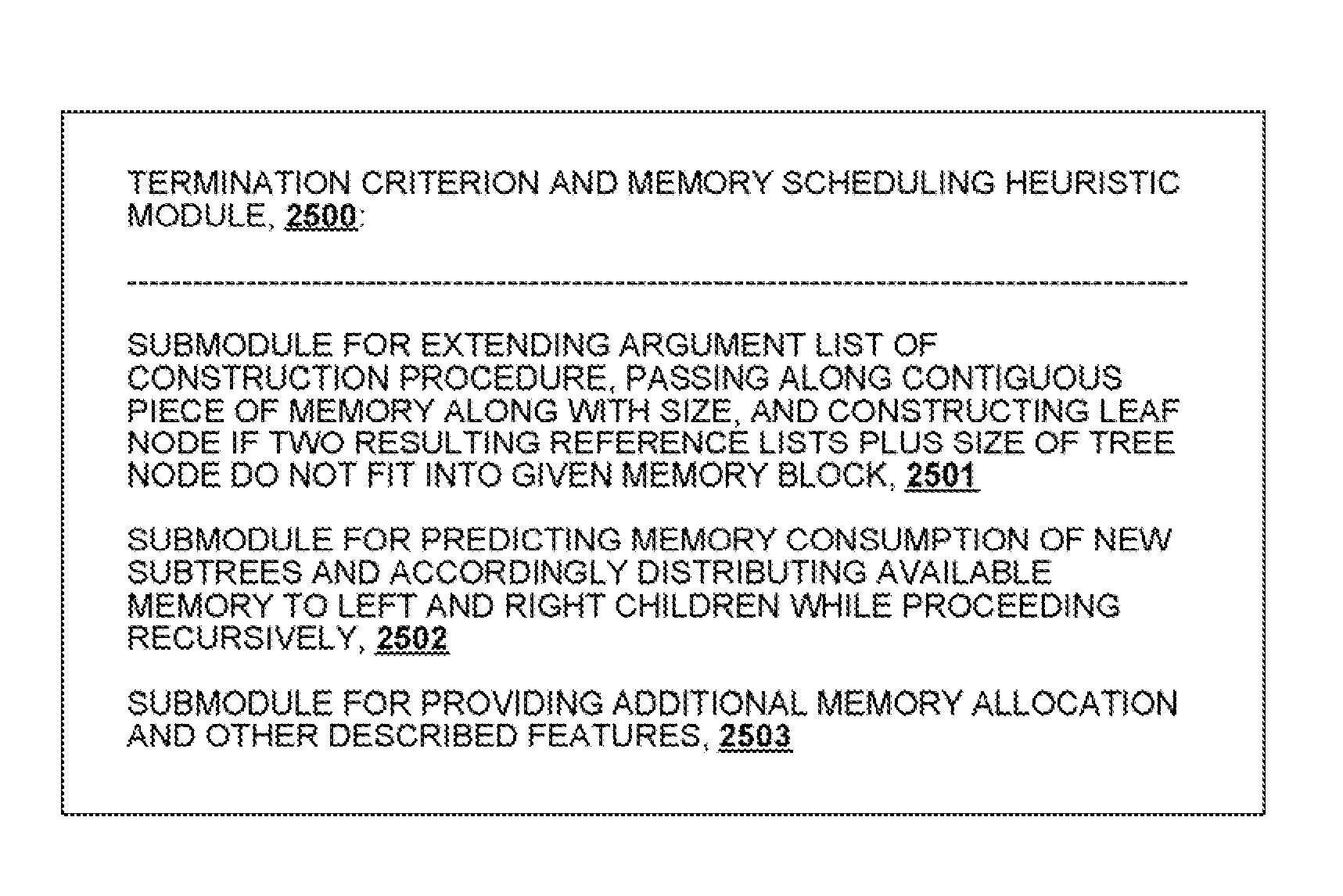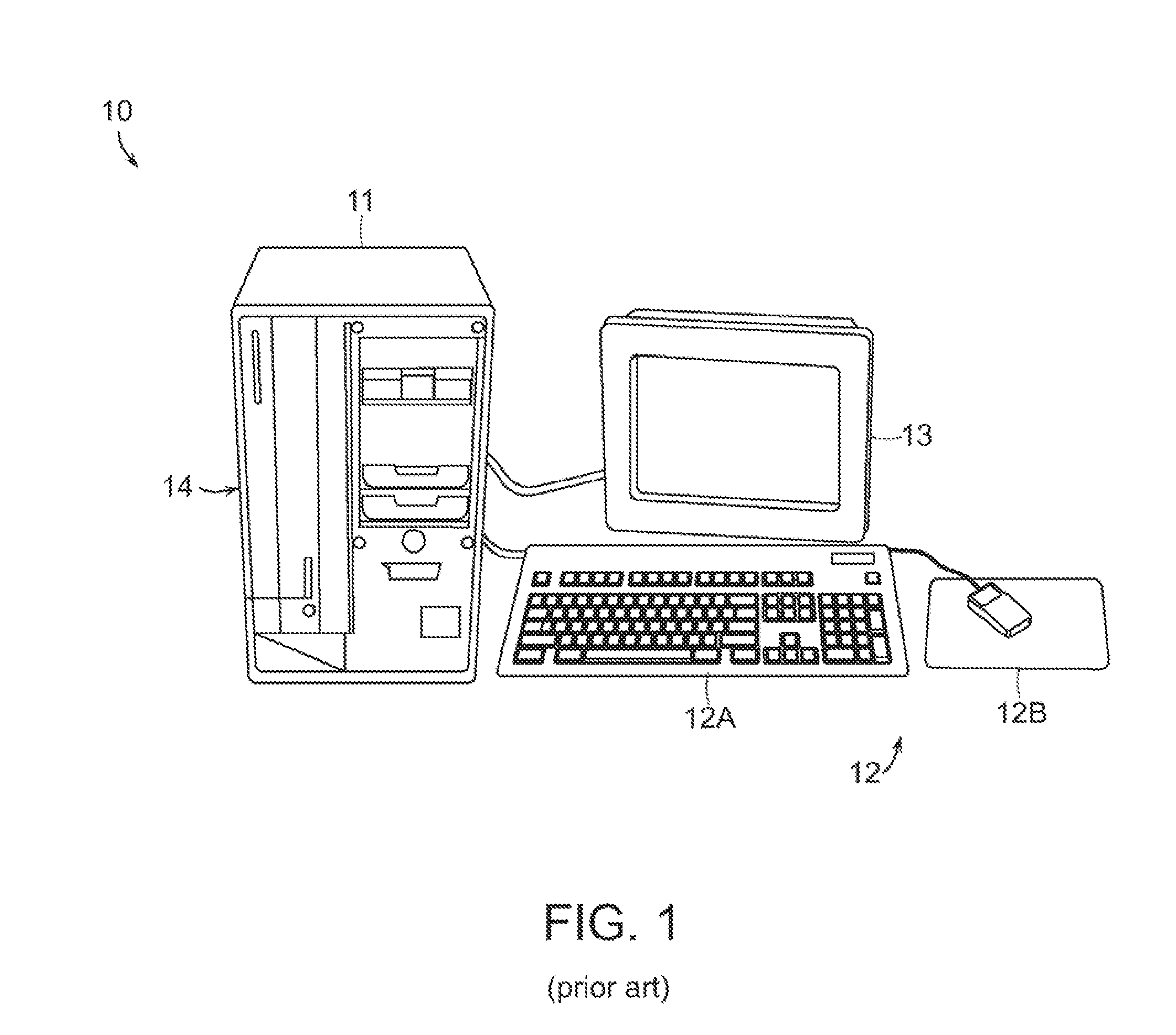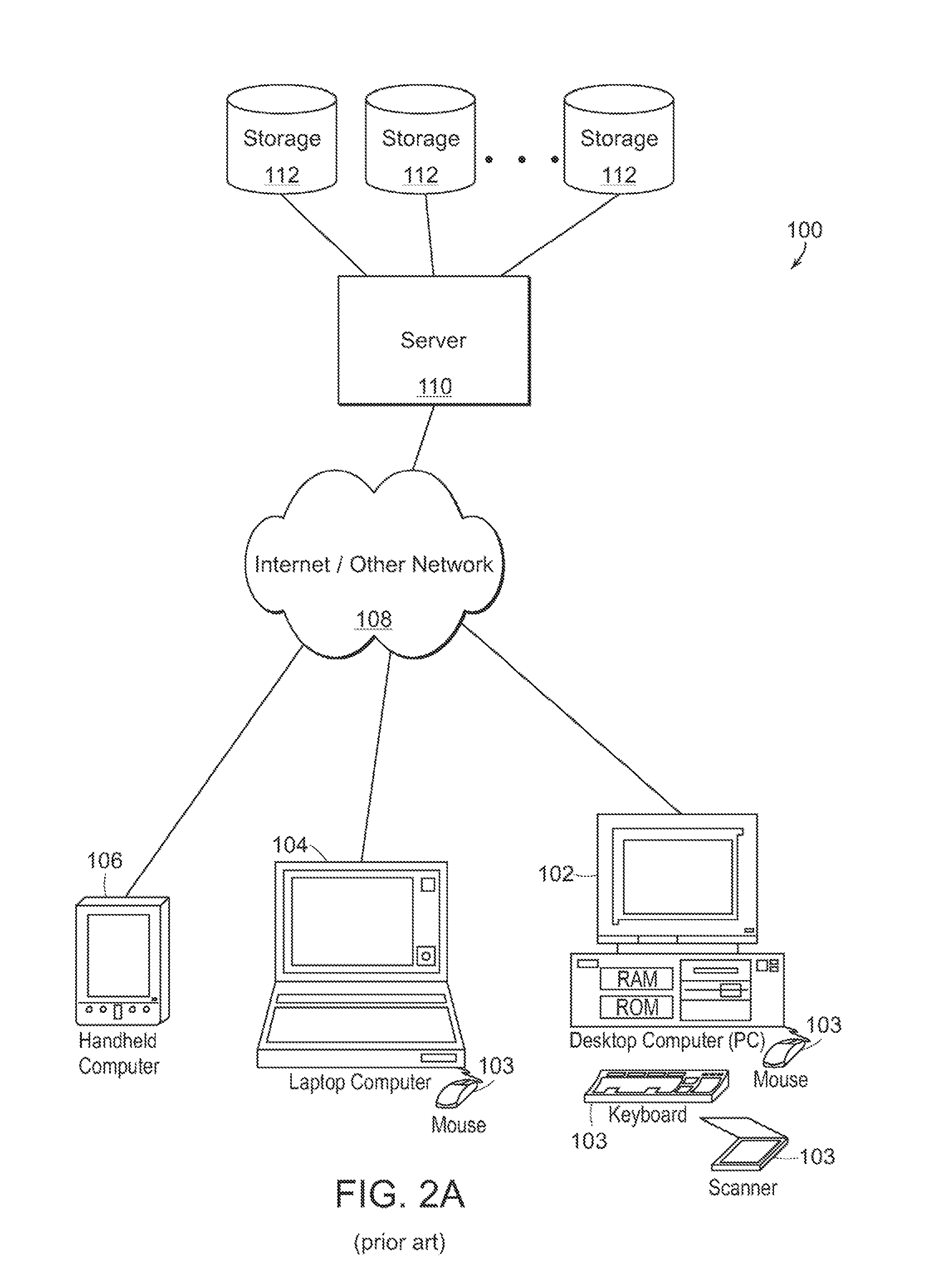Terminating spatial partition hierarchies by a priori bounding memory
a spatial partition and memory technology, applied in the field of terminating, can solve the problems of slow setup of acceleration data structures, limited ability to process dynamic scenes, and known limitations and weaknesses of current ray tracing techniques
- Summary
- Abstract
- Description
- Claims
- Application Information
AI Technical Summary
Benefits of technology
Problems solved by technology
Method used
Image
Examples
Embodiment Construction
Digital Processing Environment in which Invention can be Implemented
[0103]Before describing particular examples and embodiments of the invention, the following is a discussion, to be read in connection with FIGS. 1 and 2, of underlying digital processing structures and environments in which the invention may be implemented and practiced.
[0104]It will be understood by those skilled in the art that the present invention provides methods, systems, devices and computer program products that enable more efficient ray tracing and other activities in computer graphics systems, whose output is typically a human-perceptible (or digitally stored and / or transmitted) image or series of images that can comprise, for example, an animated motion picture, computer aided design representation, or other typical computer graphics output. The present invention can thus be implemented as part of the computer software or computer hardware of a computer that forms part of a computer graphics system, along...
PUM
 Login to View More
Login to View More Abstract
Description
Claims
Application Information
 Login to View More
Login to View More - R&D
- Intellectual Property
- Life Sciences
- Materials
- Tech Scout
- Unparalleled Data Quality
- Higher Quality Content
- 60% Fewer Hallucinations
Browse by: Latest US Patents, China's latest patents, Technical Efficacy Thesaurus, Application Domain, Technology Topic, Popular Technical Reports.
© 2025 PatSnap. All rights reserved.Legal|Privacy policy|Modern Slavery Act Transparency Statement|Sitemap|About US| Contact US: help@patsnap.com



